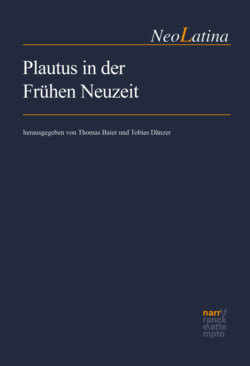Читать книгу Plautus in der Frühen Neuzeit - Группа авторов - Страница 22
2. The Standard Account
ОглавлениеIn 1552 CamerariusCamerarius d.Ä., Joachim published an epoch-making edition of Plautus’ comedies in Basel (reprinted there in 1558); later scholars heaped praised on him for “healing” the text of Plautus.1 If you read a standard account of the salt road CamerariusCamerarius d.Ä., Joachim traversed to earn this praise, it goes like this2:
With the decline of Rome in the West, the majority of Plautus’ comedies were not recopied and eventually forgotten. For a thousand years nothing changed until, in 1428 or 1429, the German monk Nicholas of CusaKues, Nicolaus von (1401–1464), known as Cusanus, lit a stick of dynamite, threw it into Italy, and sparked the Renaissance.
Not real dynamite, of course, but a one-humped “camel.” In 1428, Cusanus had found a manuscript in Trier that contained twelve of Plautus’ lost plays (viz. BacchidesBacchides + EpidicusEpidicus to TruculentusTruculentus). He took it to Rome and gave or sold it to Cardinal Giordano OrsiniOrsini, Giordano (Kardinal) (1360/70–1438). Today that camel is called the codex Ursinianus, abbreviated manuscript D (Vaticanus Latinus 3870). Four decades later, the Venetian professor Giorgio MerulaMerula, Giorgio (c. 1430–1494) made it the basis for creating the first complete printed edition of Plautus; he published it in Venice in 1472. Others soon pirated MerulaMerula, Giorgio’s text, and it thus became the first vulgate.
Back in Germany, Joachim CamerariusCamerarius d.Ä., Joachim was born in 1500 in Bamberg. In 1513, he began studying Plautus at Leipzig University with a charismatic professor and Plautophile named Veit (i.e. Vito) WerlerWerler, Veit (1480s – after 1536).3 In 1530, CamerariusCamerarius d.Ä., Joachim published two comedies in Nuremberg, MenaechmiMenaechmi and MostellariaMostellaria, that he had reedited on the basis of new manuscript sources. A decade later, he published two more partial editions in Leipzig, one in 1545 and the other in 1549. In 1552, CamerariusCamerarius d.Ä., Joachim finally published in Basel his epoch-making, complete edition of all of Plautus’ 20 comedies. In 1558, he published a corrected reprint that became the second vulgate; it remained the basis of every subsequent edition for the next 250 years.
In Milan in 1815, Cardinal Angelo Mai (1782–1854) stumbled on a new manuscript of Plautus, the Ambrosian Palimpsest, that warranted a radical new edition of Plautus.4 That manuscript is tremendously important, but I won’t mention it again in this paper.
What made that second vulgate so special and enduring? The answer is that CamerariusCamerarius d.Ä., Joachim based it on two valuable but previously unknown camels, known today as the Codex Vetus (B) and the Codex Decurtatus (C). To prevent information overload, I commissioned an allegory to help tell them apart.
The Allegory of the CamerariusCamerarius d.Ä., Joachim Camelarius, by Lucy Plowe (2017). Note the weariness on his face.
